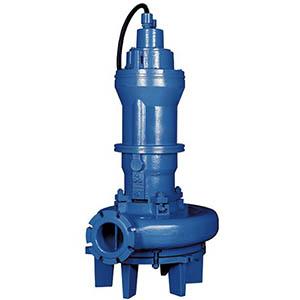Like many other machines, slurry pumps require regular maintenance to operate optimally and reliably. Without proper maintenance, pumps can fail catastrophically, leading to unscheduled repairs, potential injuries and facility downtime. Even if they don't fail, poorly maintained pumps can lose a full 15 percent of their efficiency, costing pump owners money, reducing output and hurting their bottom line. And, while pump owners and operators can perform some of the maintenance themselves, in some cases a call to a professional is required.
If your slurry pump is belt driven, check the tension at least once a quarter. A belt that is too tight can damage the light tandem motor bearing and once that bearing fails, the thrust bearing in the pump will begin to fail. A belt that runs too loose will cause performance degradation and slipping will damage the pulley.
I like to use the Gates Tension Tester. It is a simple tool with instructions. An experienced ear can tell if the belts are too loose. They will make a fluttering sound. Before you start noticing bearing failure, a belt that is too tight may cause the motor to pull high current or the bearing temperature to rise.
If your pump is oil lubricated, check it regularly to make sure there is no water or product in the oil. If your seals are OK, regular oil changes will extend the life of any pump.
Water is bad because it can cause bearing and/or motor failure. Seals will leak naturally and a small amount of water will be fine. Large amounts of water in the oil will cause the oil to be milky white.
There are some key features that may have been included in the pump design to help identify water in the oil. One such feature is a moisture sensor that will trip when there is too much water in the oil. Moisture in the oil is an early indicator of seal damage.
The first thing to check is the seals used on a particular pump. If you feel that the moisture sensor is giving false alarms, try adjusting the sensitivity setting.
Another thing to check is the set distance from the end of the probe to the housing.
Occasionally checking the impeller clearance will allow for optimal performance. Consult your manual for the correct clearance. When checking the clearance, watch for excessive wear on the impeller and other fluid catching parts.
Wear of the fluid catching parts can cause an increase in clearance, which can lead to a decrease in performance.
Wear may be caused by wear of the product being pumped, or by the pump running off the pump design curve.
Is the slurry pump still being asked to do what it is supposed to do?
Sometimes systems and processes change, but we continue to put the same requirements on our equipment without considering changes that may have been made to the process over the years.
For troubleshooting purposes, it is a good idea to install a pressure gauge and flow meter on the discharge line of the pump. You can multiply the pressure reading by 2.31 to get a rough TDH. You can then get a TDH and a flow reading to see if your pump is running near the BEP on the pump curve. If not, contact the OEM.
Our submersible pumps are equipped with temperature sensors to protect the motor. Each manual supplied with your pump will outline how to connect and monitor the temperature sensor for maximum life.
If the motor overheats, the sensor will trip and the pump will shut down until the motor cools. If the sensor is not connected, you run the risk of burning out the motor. If you file a warranty claim and these devices are not connected, your warranty is void.
Our horizontal and cantilever pumps require a weekly bearing temperature check while the pump is running. Use a temperature gun to check the temperature of the bearing housing closest to the bearing.

While most pump bearings operate in the 140 to 170 F range, I recommend never letting the temperature exceed the 200 F maximum. Bearing temperatures can be a sign of excessive lubrication or the beginning stages of bearing failure.
Use some form of vibration equipment. This will give you an indication if the bearing begins to fail.
Vibration analysis should be performed by a qualified and trained engineer/technician with experience in this type of work.
Proper vibration monitoring will provide the user with a lot of useful information that can increase MTBF and improve pump performance.
Regular maintenance of your slurry pumps extends wear life, helps avoid unplanned downtime and reduces the total cost of ownership for the end user. In the harsh, demanding world of mining, slurry pumps often run to critical points before intervention is made. This may seem beneficial in the short term, but in the long run, you may be doing your plant an injustice.
Name: KATImachinery
Mobile:+86031180632344
Tel:+86031180632344
Email:info@katimachinery.com
Add:306-1 Zhongchuang building 5,No.251 Yucai street, Shijiazhuang China